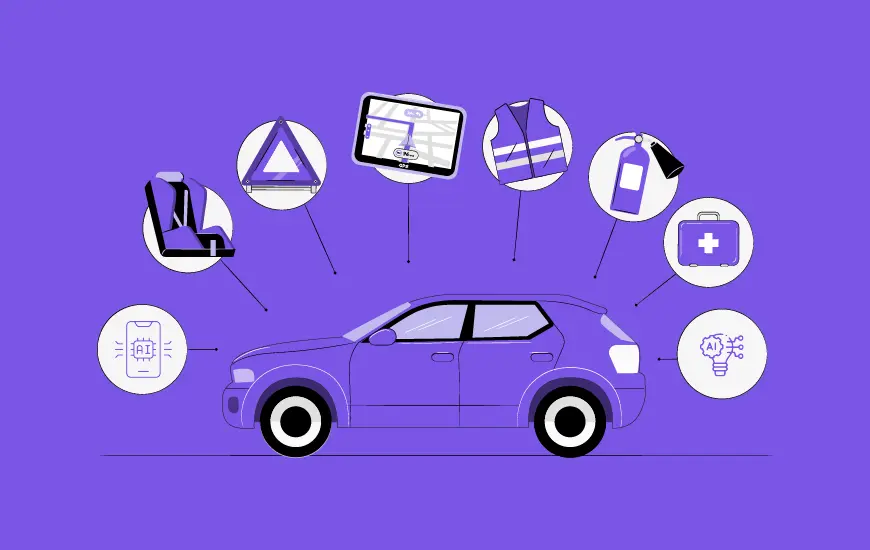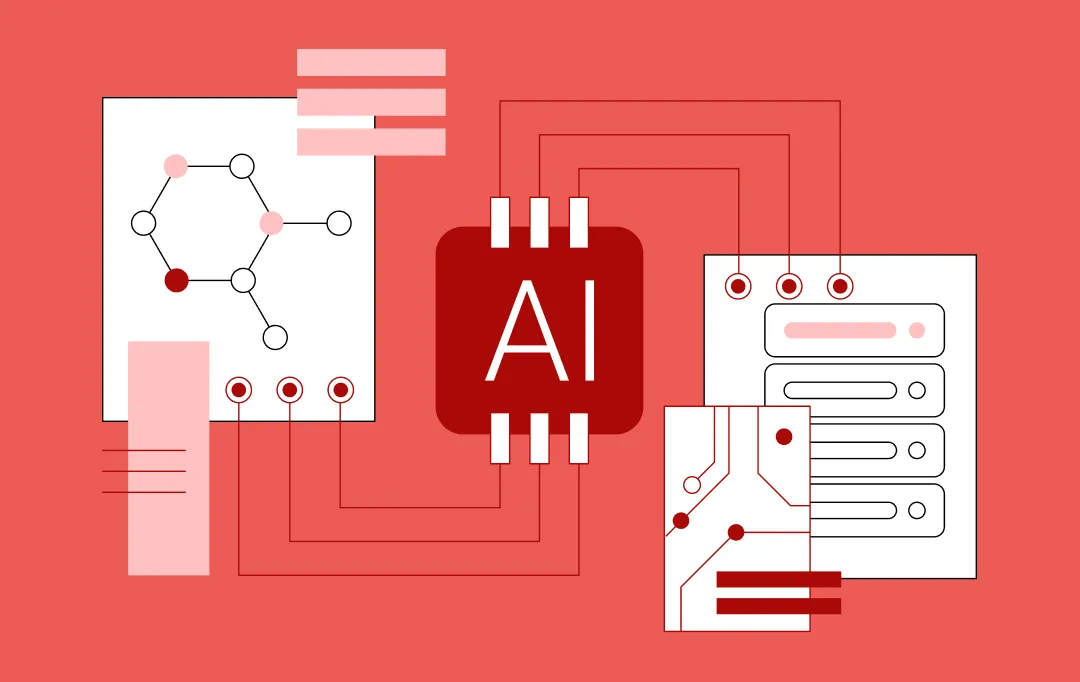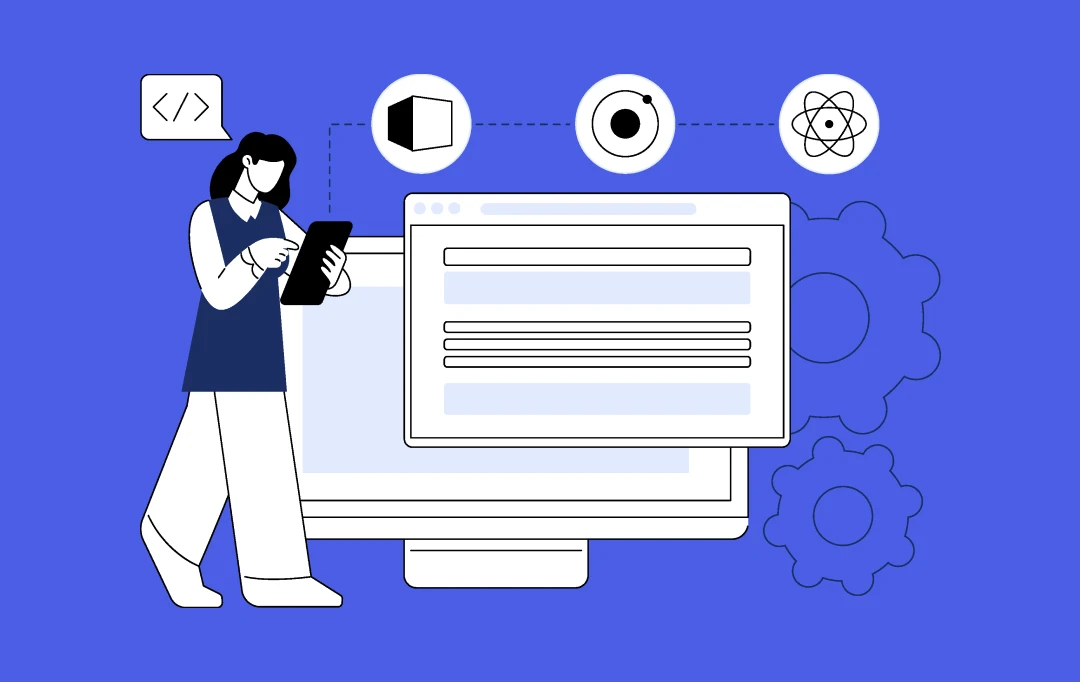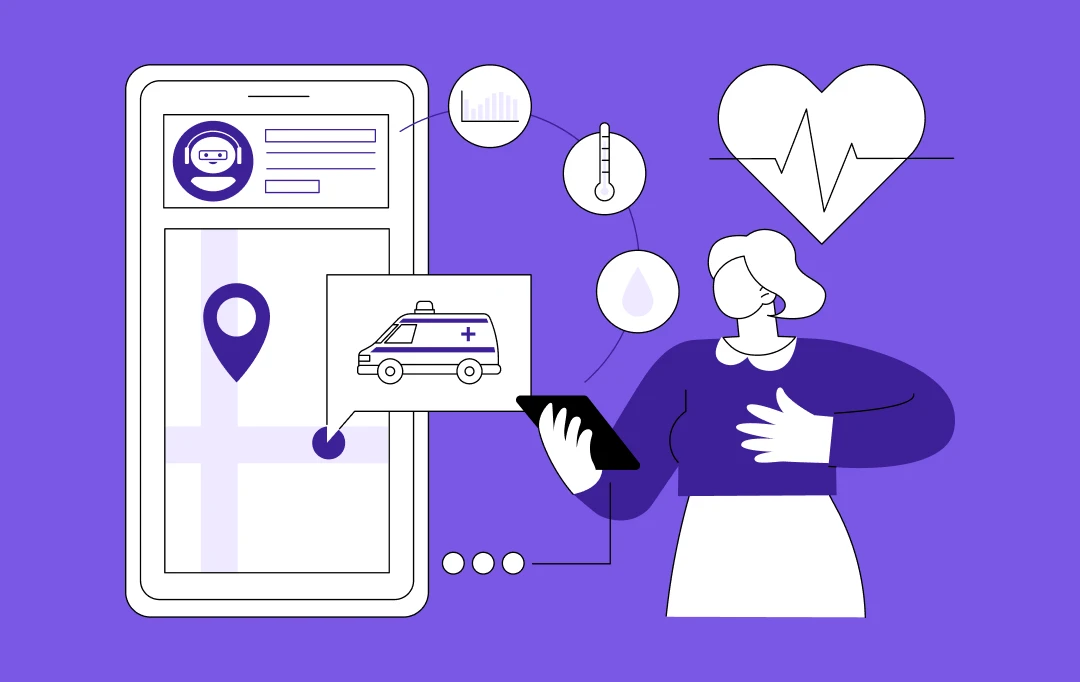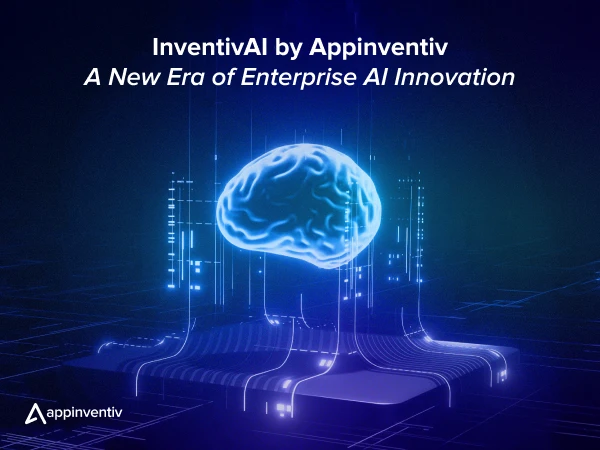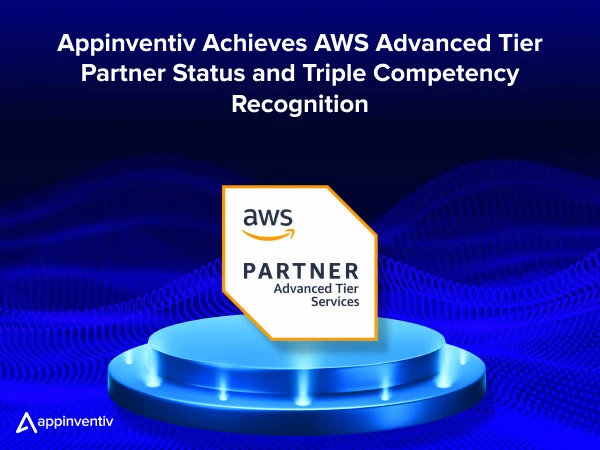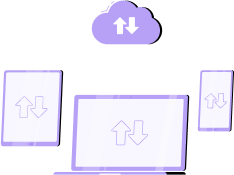- How Does EHR CRM Integration Work Together?
- Why EHR-CRM Integration is Essential for Modern Healthcare
- Enhanced Patient Experience and Engagement
- Optimized Operational Efficiency and Workflow
- Enhanced Revenue and Sustainable Growth
- Better Clinical Outcomes
- Improved Care Coordination
- Data-Driven Insights and Reporting
- Types of EHR CRM Integration for Healthcare
- One-Way Integration
- Two-Way Integration
- Modular Integration
- Custom API-Based Integration
- Our Step-by-Step EHR CRM Integration Process
- Assess Requirements
- Choose the Right Tech Stack
- Data Mapping
- Custom Development or Middleware
- Testing and Validation
- Training and Rollout
- Continuous Monitoring
- Addressing CRM EHR Integration Challenges
- 1. Data Fragmentation
- 2. System Incompatibility
- 3. Compliance Risks
- 4. User Adoption Issues
- 5. Integration Costs
- Your Path to Efficient EHR CRM Integration Starts with Appinventiv
- FAQs
Key takeaways:
- EHR-CRM Integration enables personalized care by combining clinical and patient interaction data into a unified profile.
- It streamlines workflows, reduces redundant data entry, and enhances operational efficiency.
- Integration optimizes patient acquisition, retention, and billing accuracy, driving revenue growth.
- It improves clinical outcomes by enabling faster, data-driven decision-making and timely interventions.
Ever feel like your healthcare system is juggling too many disconnected balls? In today’s fast-paced healthcare environment, patient care is about much more than just a single visit. It’s about creating lasting relationships, understanding every interaction, and truly getting to know your patients from their very first inquiry all the way through their ongoing care. This is precisely why your Electronic Health Records (EHR) and Customer Relationship Management (CRM) systems, traditionally separate entities, need to become best friends.
Integrating your EHR with your CRM isn’t just a nice-to-have anymore – it’s absolutely essential for modern healthcare. Imagine having all clinical data seamlessly connected with every patient interaction, marketing touch, and administrative detail. This transforms fragmented insights into a holistic patient journey, boosting efficiency, improving communication, and ultimately enhancing care.
In fact, robust digital tools and interoperability, key components of strong EHR-CRM integration, could lead to a significant increase in efficiency across healthcare systems. For instance, the demonstration below discusses the impact of EHR in healthcare and how it can generate considerable profit margins.

According to a report by McKinsey, adopting a combination of advanced healthcare strategies—including digital integration, data-driven decision-making, and workflow optimization—can result in a 10% to 20% increase in contribution margin. Beyond financial performance, these approaches also drive a notable improvement in clinical care quality, enhancing patient outcomes, operational efficiency, and overall provider effectiveness.
But how do you bridge this crucial gap effectively without a headache? Let’s dive into why this integration is paramount and exactly how to get it right for your modern healthcare practice.
EHR integrations can lead to a 10–20% increase in profit margins.
Begin your transformation journey with our experts through full-scale CRM-EHR integration tailored to your healthcare systems.
How Does EHR CRM Integration Work Together?
EHR CRM integration works by seamlessly linking clinical data from EHR systems with patient engagement and communication data from CRM platforms. This unified system creates a comprehensive, real-time patient profile that allows healthcare providers to access both medical histories and interaction details in one place. It enhances patient care by enabling more personalized communication, such as automated appointment reminders, follow-ups, and treatment reminders based on clinical data, improving patient adherence and outcomes.
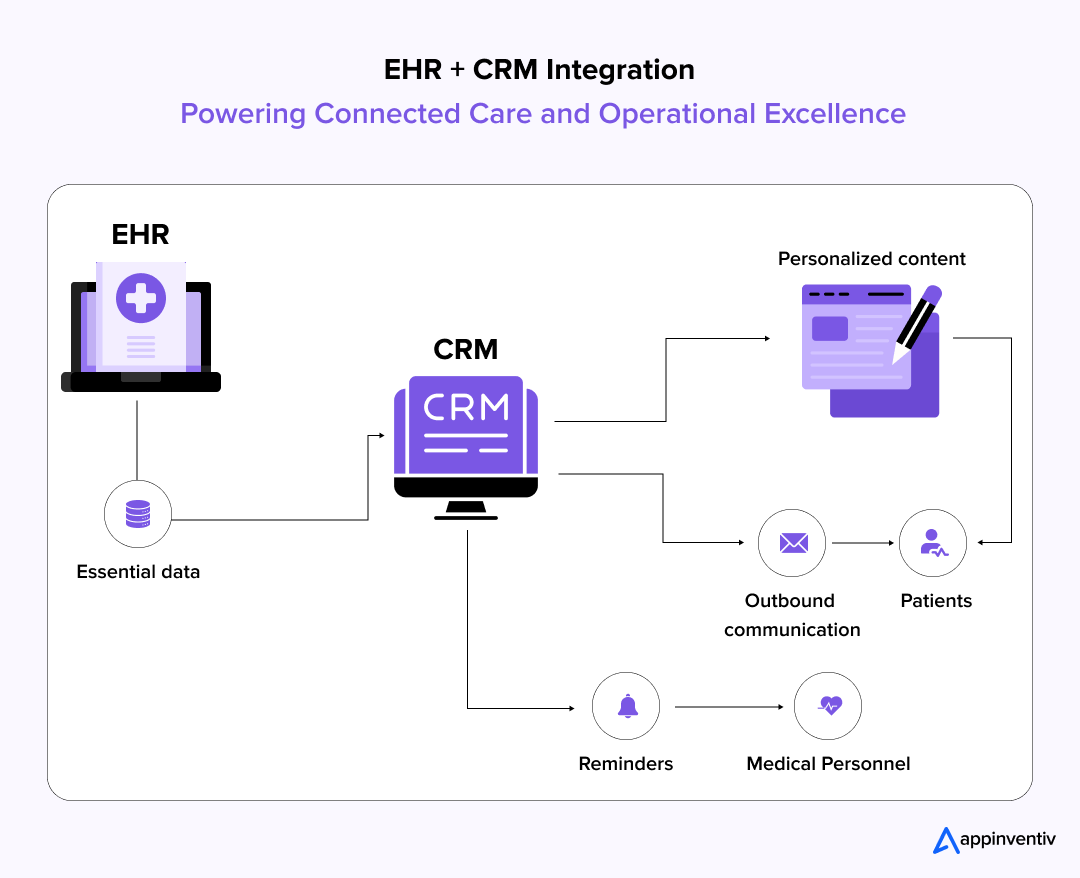
The integration also improves operational efficiency by eliminating redundant data entry and ensuring that both clinical and administrative teams have access to the same up-to-date information. This not only streamlines workflows but also enables better care coordination, allowing for more informed decision-making and enhanced patient engagement. Overall, EHR CRM integration enhances patient experience, reduces administrative burden, and drives better healthcare outcomes..
Why EHR-CRM Integration is Essential for Modern Healthcare
The modern healthcare landscape demands a unified approach to patient management. The strategic decision to pursue robust EHR CRM integration in healthcare is no longer a matter of future planning but an immediate necessity. This convergence unlocks unprecedented levels of operational efficiency, patient satisfaction, and revenue generation, proving its essentiality for survival and growth.

Enhanced Patient Experience and Engagement
Integrating EHR and CRM systems enhances the patient experience by providing a unified, patient-centered approach. This EHR CRM integration allows for personalized communication, proactive follow-ups, and reminders based on both medical records and patient preferences.
This improves patient adherence and outcomes, fostering greater engagement and loyalty.
EHR CRM integration in healthcare helps reduce repetitive data entry, making it easier for patients to access both clinical and administrative information, thus improving overall satisfaction.
Optimized Operational Efficiency and Workflow
The integration of EHR CRM systems brings a 360-degree view of each patient, enabling healthcare providers to make informed decisions faster. This unified profile reduces the need for multiple logins and manual data retrieval, saving time and streamlining administrative workflows.
Automating appointment scheduling, insurance claims, and billing processes through EHR CRM integration for healthcare ensures operational efficiency and reduces administrative burden, improving staff morale and performance.
Enhanced Revenue and Sustainable Growth
Strategic EHR CRM integration drives revenue growth by improving patient acquisition, retention, and optimizing financial operations. Integrated systems allow for more targeted marketing campaigns, increasing conversion rates for new patients and reducing churn.
Moreover, EMR and CRM integration helps ensure accurate billing and claims processing, directly impacting the revenue cycle by reducing errors and minimizing denials.
Better Clinical Outcomes
EHR CRM integration enables real-time access to both clinical data and patient engagement information. This comprehensive view allows healthcare providers to identify at-risk patients sooner, delivering timely interventions and personalized treatment plans.
By combining clinical data from Electronic Medical Records integration and engagement history from the CRM, clinicians can make informed decisions, improving both diagnosis and patient care.
Improved Care Coordination
With EHR CRM integration in place, healthcare providers can achieve seamless data exchange across departments, ensuring smoother transitions of care. This results in better collaboration between primary care providers, specialists, and external providers.
EHR and CRM integration features also ensure that treatment plans are cohesive, reducing redundancies and avoiding costly errors or duplicated tests.
Data-Driven Insights and Reporting
Integrated EHR CRM systems allow healthcare organizations to access consolidated data, offering valuable insights into patient outcomes, operational performance, and marketing effectiveness.
The powerful analytics derived from this data empower decision-makers to optimize resources and continually improve service delivery. This shift towards data-driven decision-making is crucial for healthcare businesses aiming to remain competitive in an increasingly digital landscape.
Also Read: Data Analytics in Healthcare: Transforming Patient Care
Types of EHR CRM Integration for Healthcare
Understanding the types of EHR CRM integration for healthcare is crucial when deciding which model will best serve your organization’s needs. The integration model you choose directly impacts system performance, scalability, and implementation costs. Each type of integration offers distinct benefits depending on your healthcare organization’s size, operational complexity, and patient care objectives. Here are the most common types of EHR-CRM integration:
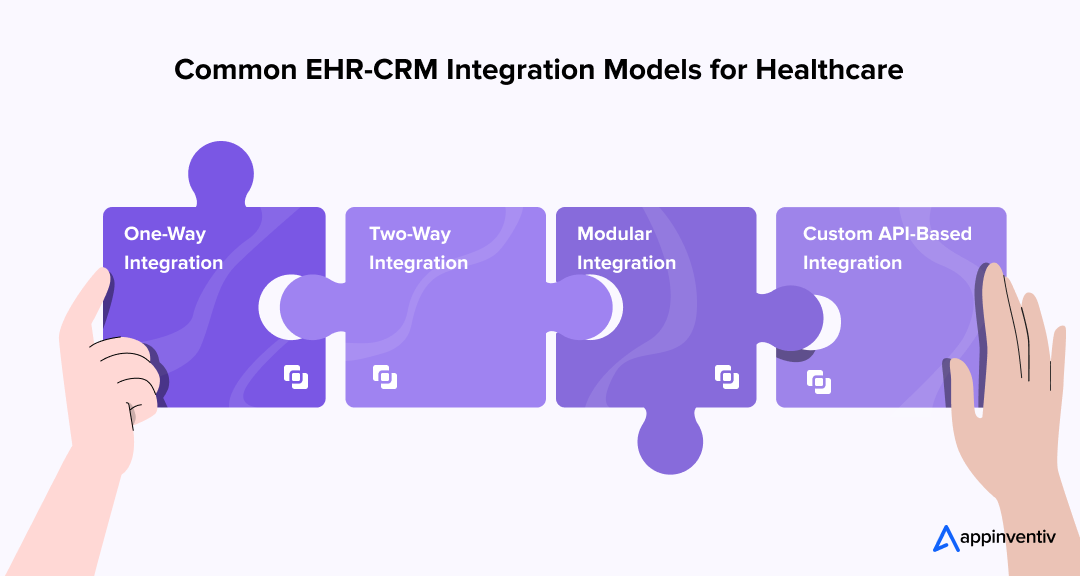
One-Way Integration
In a one-way integration, data flows only from the EHR to the CRM, allowing for a streamlined communication system between the two platforms. This integration model is commonly used for patient engagement, marketing campaigns, and communication purposes.
The primary benefit of one-way integration is its simplicity and cost-effectiveness, as it reduces the complexity of managing bi-directional data. However, it may limit the ability to update patient information within the CRM in real-time, making it less suitable for organizations that require more dynamic, interactive workflows.
Two-Way Integration
Two-way Healthcare CRM integration allows for bi-directional syncing of data between the EHR and the CRM, ensuring both systems remain consistently updated in real time. This integration is ideal for healthcare organizations that need to manage both patient care and administrative tasks seamlessly.
With two-way integration, changes made in one system, such as updating patient contact details in the CRM, will automatically reflect in the EHR, and vice versa. This approach ensures better synchronization, reduces the risk of errors, and allows for improved communication and coordination between clinical and non-clinical teams, resulting in a more cohesive care experience for patients.
Modular Integration
Modular integration involves the integration of specific functions or modules from the EHR and CRM systems rather than a full-scale, organization-wide integration. This model is often used for organizations that only need to integrate specific features, such as appointment scheduling, lab results, or referrals.
For example, a healthcare provider may integrate the CRM for automated appointment reminders while leaving clinical data management separate. Modular integration is beneficial because it is often more cost-effective and can be tailored to the organization’s immediate needs. However, it may lack the comprehensive, holistic data synchronization that a full integration offers, which could limit long-term growth and scalability.
Custom API-Based Integration
A custom API-based integration offers the highest level of flexibility by using custom-built APIs to connect EHR and CRM systems. This integration model is ideal for large healthcare organizations or those with complex, unique requirements that off-the-shelf solutions cannot address.
Custom API-based integration allows for the tailoring of specific workflows and data flows to suit the exact needs of the organization. While it provides unparalleled flexibility and scalability, it also requires significant investment in development and maintenance, which can increase both implementation time and costs. This type of EMR or EHR integration is best suited for large-scale healthcare providers or enterprises that require a fully customized, scalable solution.
Also Read: EMR Integration in Healthcare: Benefits, Features, & Costs
Our Step-by-Step EHR CRM Integration Process
Successfully implementing EHR CRM integration requires careful planning and a well-structured approach. By following a clear, step-by-step process, healthcare organizations can ensure that the integration is seamless, functional, and scalable. Here’s a detailed guide to ensure a smooth EHR CRM integration for healthcare:

Assess Requirements
One of the top best practices for EHR CRM integration is to understand your organization’s specific needs and define clear goals. Do you need to improve patient engagement, streamline billing, or optimize workflow? Each goal will have a direct impact on the integration’s design and scope. By assessing these requirements upfront, you can ensure that the chosen solution addresses both clinical and administrative needs.
Defining objectives early will also help you prioritize key features, such as EHR integration in CRM for better patient communication or a more robust analytics system for data-driven decisions.
Choose the Right Tech Stack
Selecting the right technology stack is crucial to the success of your EHR-CRM interoperability. The platforms you choose must be compatible with your existing EHR and CRM systems while ensuring they can handle the data flow and security needs of your organization.
When evaluating potential solutions, make sure they support key interoperability standards like FHIR and HL7 for seamless data exchange. Additionally, the platforms should be scalable to accommodate future growth and adaptable to industry-specific needs, including HIPAA-compliant CRM integration to meet data security regulations.
Data Mapping
Once the appropriate tech stack is chosen, the next step is data mapping. This involves identifying and aligning data fields across both the EHR and CRM systems to ensure consistency and accuracy.
For example, patient contact information, appointment histories, and medical records need to be mapped in such a way that they synchronize between both systems. EHR CRM integration can only be successful if data flows smoothly and is standardized, allowing for accurate patient profiles and reducing the risk of errors in patient care or communication.
Custom Development or Middleware
In many cases, custom development or middleware will be necessary to bridge any gaps between the EHR and CRM systems. If the systems are not inherently compatible, middleware can facilitate communication between the two platforms.
For larger healthcare providers or organizations with unique needs, custom development may be required to create specific workflows or integrate specialized data sources. Custom solutions can enhance the flexibility and scalability of your EHR CRM integration, ensuring that the integration is tailored to your organization’s exact specifications and operational demands.
Testing and Validation
Before going live with the integration, testing, and validation are critical steps. This stage involves running tests to ensure that data is flowing correctly between the EHR and CRM systems and that no data is lost or misrepresented during the synchronization process. Testing should also cover potential security vulnerabilities, ensuring that sensitive patient data remains protected.
Additionally, EHR CRM integration should be validated for compliance with industry standards such as HIPAA, confirming that the integration meets all regulatory requirements. Only after successful testing should the system be ready for full deployment.
Training and Rollout
Once the integration is tested and validated, training and rollout become essential. All relevant staff members, including healthcare providers, administrative teams, and IT support staff, must be thoroughly trained on how to use the new integrated system.
Comprehensive training ensures that everyone understands how to access and use patient data, how to manage appointments, billing, and communication through the CRM system, and how to monitor and troubleshoot any issues. Providing ongoing support during the rollout phase will help facilitate smoother adoption and reduce resistance from users who may be unfamiliar with the integrated workflow.
Continuous Monitoring
The final step is continuous monitoring. Even after successful implementation, it is essential to regularly monitor system performance to ensure it continues to meet the clinical and operational needs of your organization. This involves tracking key metrics such as data flow accuracy, system downtime, patient engagement, and billing accuracy.
Continuous monitoring enables the identification of issues or inefficiencies early on, allowing for timely adjustments. Additionally, periodic audits can help ensure that the integration remains HIPAA-compliant and secure, safeguarding sensitive patient data.
Implement EHR-CRM integration the right way—with our proven step-by-step process designed for healthcare success.
Addressing CRM EHR Integration Challenges
While the benefits of EHR CRM integration are undeniable, healthcare organizations must also address several challenges that arise during the process. Successfully integrating EHR systems with CRM platforms requires overcoming barriers like data fragmentation, system incompatibility, and regulatory compliance issues. Here are the most common EHR integration challenges and ways to navigate them:
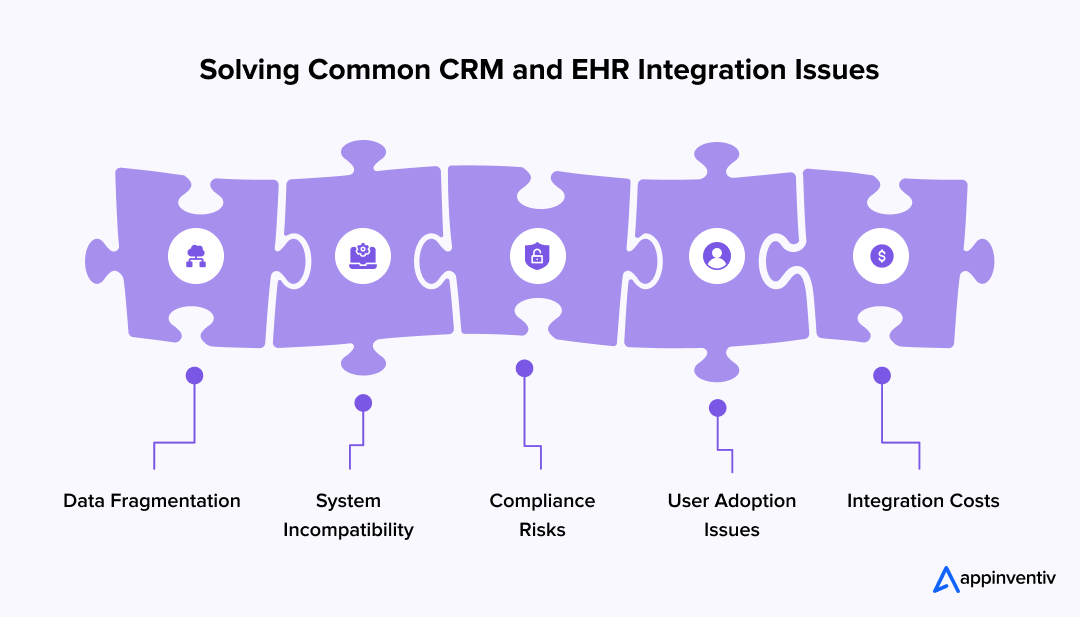
1. Data Fragmentation
One of the most significant EHR integration challenges is data fragmentation. Many healthcare organizations still rely on legacy systems that house poorly structured or siloed data. When attempting to integrate EHR systems with CRM platforms, this fragmented data can hinder smooth migration, making it challenging to effectively combine clinical and administrative data.
To mitigate this challenge, healthcare organizations need to focus on data cleansing and standardization before initiating the integration. Data mapping strategies should be employed to ensure that each data point is accurately matched between the EHR and CRM systems, allowing for seamless synchronization and reliable data flow. Structured data standards like HL7 and FHIR can play a pivotal role in overcoming this challenge.
2. System Incompatibility
Another common EHR CRM integration issue arises from system incompatibility. Healthcare organizations often rely on proprietary EHR and CRM platforms that may not have open Application Programming Interfaces (APIs), which are necessary for smooth data exchange between systems. These incompatibilities can result in delays, additional costs, and the need for custom development efforts to bridge the gap.
To address this challenge, organizations must carefully evaluate their existing platforms for interoperability before integration. If the current systems lack open APIs or have limited integration capabilities, middleware solutions or custom API development might be required to enable data synchronization. Opting for solutions that support modern integration protocols like FHIR ensures that both the EHR and CRM systems can communicate effectively, even if they are built on different platforms.
3. Compliance Risks
Compliance risks are a critical concern when integrating EHR and CRM systems, especially due to the sensitive nature of healthcare data. Without careful planning and the appropriate safeguards, the integration process could lead to HIPAA violations, jeopardizing both patient trust and the organization’s reputation. The risk is particularly high when data flows between the EHR and CRM systems without proper encryption, secure access controls, or audit trails.
To ensure that EHR CRM integration complies with regulatory standards like HIPAA, organizations must choose platforms that offer built-in security features such as end-to-end encryption, role-based access control, and secure data storage.
Also Read: A Complete Guide to Healthcare Compliances
4. User Adoption Issues
Even after overcoming technical and regulatory challenges, user adoption remains a significant hurdle in the EHR CRM integration process. Clinicians and administrative staff may resist adopting new workflows, particularly if they are complex or time-consuming. This resistance can delay or even derail the integration process, leading to reduced efficiency and suboptimal patient care.
To mitigate user adoption issues, healthcare organizations must prioritize training and change management. Clinicians and staff should be involved in the integration process early on, ensuring they understand the benefits of the new system and how it will streamline their daily tasks. Providing ongoing training and support will help users feel comfortable with the new workflows, leading to smoother adoption and increased efficiency.
5. Integration Costs
The cost of EHR CRM integration can escalate if not managed carefully. While the integration promises significant long-term benefits, such as improved operational efficiency and enhanced patient engagement, the initial costs can be substantial. From custom development to middleware solutions, integration costs can vary widely depending on the complexity of the systems being integrated, the number of users involved, and the level of customization required.
To prevent costs from spiraling out of control, it’s essential for healthcare organizations to set a clear budget and timeline for the EHR CRM integration process. Begin by conducting a cost-benefit analysis to understand the potential return on investment (ROI). By choosing a phased approach, organizations can manage costs more effectively, ensuring that the integration is completed on time and within budget.
Your Path to Efficient EHR CRM Integration Starts with Appinventiv
As the healthcare industry continues to move toward greater digitization, EHR CRM integration will play a pivotal role in enhancing efficiency, patient satisfaction, and overall care outcomes. With advancements in technology, healthcare organizations must adopt seamless integration to remain competitive and meet the increasing demand for personalized, real-time care.
At Appinventiv, we specialize in delivering healthcare software development services that streamline operations and enhance patient engagement through EHR CRM integration. With successful projects like Health-e-People, Soniphi, and DiabeticU, we’ve demonstrated our commitment to building secure, scalable, and patient-centric solutions.
By partnering with us, our healthcare providers can confidently navigate integration challenges and drive innovation, ultimately improving both patient care and organizational efficiency. Our expertise extends to custom CRM development services, ensuring that your CRM system is tailored to the specific needs of your healthcare organization.
Whether you’re modernizing legacy systems or launching a new digital platform, Appinventiv empowers your healthcare organization with tailored solutions that deliver measurable outcomes. Get in touch with our experts now!
FAQs
Q. How does integration benefit patients?
A. Integrating CRM systems with EHR systems brings a range of significant benefits, enhancing both operational processes and patient care. By consolidating clinical and administrative data, this integration ensures healthcare organizations operate more efficiently while providing personalized, data-driven care. Here are the key benefits of EHR CRM integration:
- Enhanced Operational Efficiency: Streamlines workflows by eliminating data silos and ensuring both clinical and administrative teams have access to the same up-to-date patient information.
- Improved Patient Engagement: Facilitates personalized communication with patients, leading to better care adherence, satisfaction, and retention.
- Better Data Management: Consolidates clinical and administrative data for improved accuracy, leading to fewer errors and more informed decision-making.
- Faster Decision-Making: Real-time access to integrated data enables quicker decisions across departments, improving care coordination.
- Optimized Patient Acquisition and Retention: Strengthens patient relationships through targeted, automated outreach, resulting in higher patient retention and enhanced marketing strategies.
- Scalable Personalized Care: The integration supports large-scale operations while delivering customized care based on individual patient needs.
Q. How does CRM-EHR integration improve patient engagement?
A. CRM-EHR integration enhances patient engagement by providing a more personalized and proactive healthcare experience. By combining clinical data from the EHR system with patient interaction data in the CRM, healthcare providers can send customized reminders, alerts, and follow-ups based on the patient’s medical history and preferences.
This personalized communication encourages patients to take an active role in their care, whether it’s attending appointments, following treatment plans, or completing preventive screenings. Ultimately, integrated systems empower patients with easy access to their medical information and help healthcare providers build stronger, long-lasting relationships with them.
Q. What is the cost of EHR CRM integration?
A. The cost of EHR CRM integration varies depending on the complexity of the healthcare provider’s systems, the level of customization required, and the chosen integration model. While initial implementation may incur significant upfront costs, the long-term benefits including improved operational efficiency, better patient care, and optimized revenue cycles—make it a valuable investment.
Healthcare providers can minimize costs by selecting scalable, flexible solutions and collaborating with experienced partners like Appinventiv to ensure seamless, cost-effective integration.
Q. How long does it take to integrate CRM with EHR systems?
A. The timeline for EHR CRM integration depends on several factors, including the size of the organization, the complexity of the systems being integrated, and the level of customization required. On average, a full EHR CRM integration process can take anywhere from a few months to over a year.
It’s essential to plan the integration in phases to ensure minimal disruption to operations. Proper planning, data mapping, and testing during each phase can help expedite the process and ensure a smooth transition.


- In just 2 mins you will get a response
- Your idea is 100% protected by our Non Disclosure Agreement.

How Prescriptive Analytics Is Shaping the Future of Healthcare Management
A healthcare business doesn’t fall behind because its teams lack skill. It falls behind when decisions take too long. Bed allocation runs on yesterday’s data. Procurement reacts only when shortages hit. Care managers step in after a patient is already at risk. And leadership gets a picture of what’s happening only after the quarter closes,…
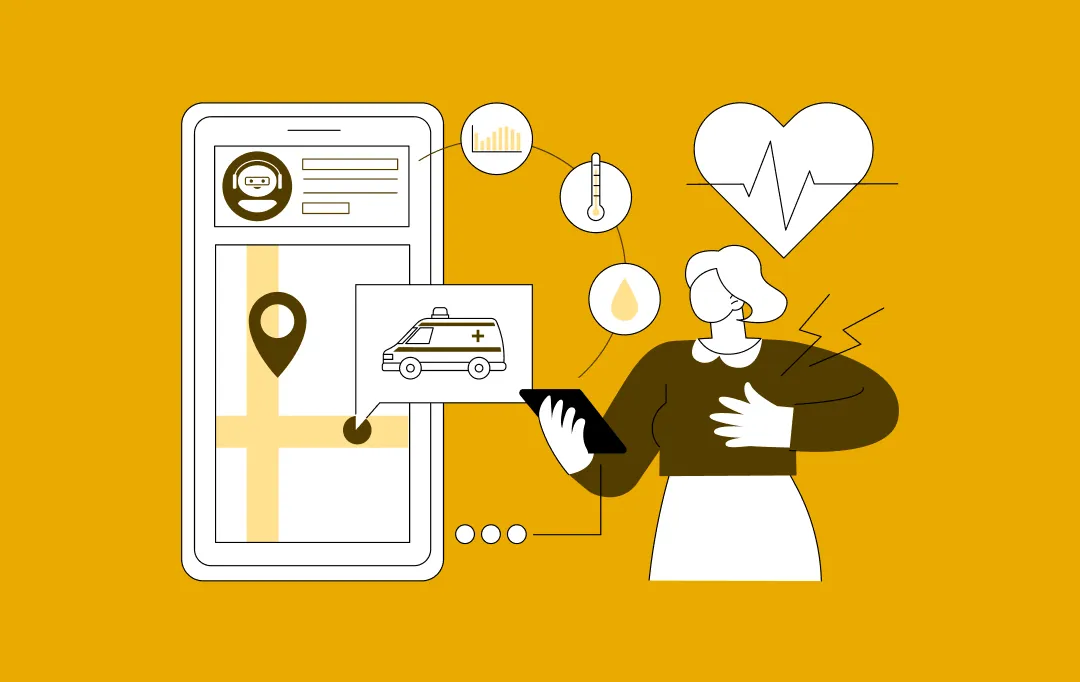
How to Build an Urgent Care App? A Step-by-Step Process, Features and Costs
Key takeaways: With more people turning to digital healthcare, the urgent care app market is expected to touch $3.1 billion by 2024 and continue growing fast through 2030. Apps that offer easy scheduling, video consultations, EHR access, and quick insurance handling tend to attract more users and keep them coming back. Developing an urgent care…

Why Healthcare Needs Speech Recognition Software and How to Build It Right?
Key Takeaways Speech recognition in healthcare is expected to grow to $3.16 million by 2030. It's now needed for competitive positioning and lasting patient care delivery. Real setups show 99% documentation accuracy, 60% faster response times, and 30-45% less documentation time. The systematic approach to implementing speech recognition software in healthcare includes requirements analysis, feature…








